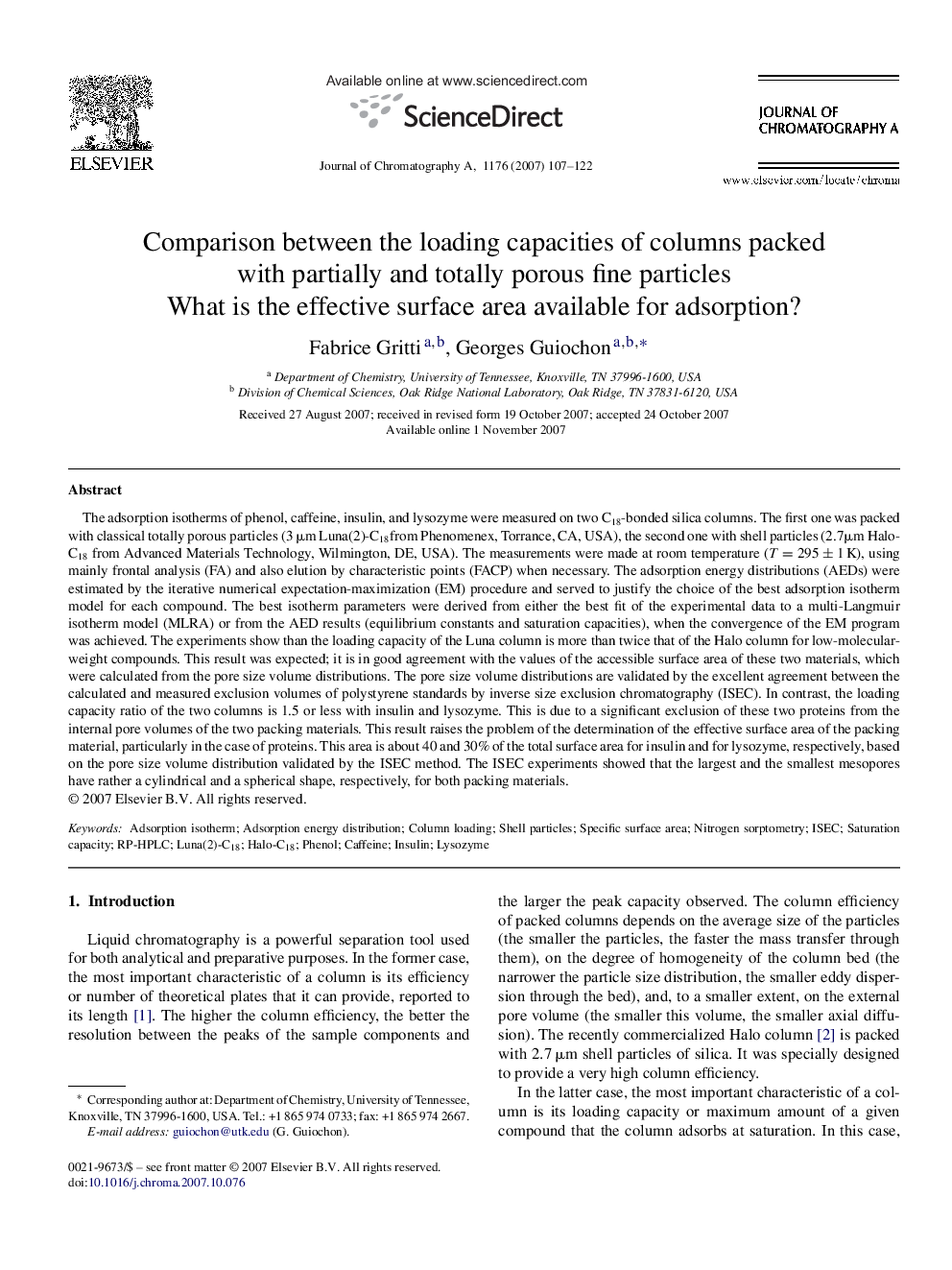| کد مقاله | کد نشریه | سال انتشار | مقاله انگلیسی | نسخه تمام متن |
|---|---|---|---|---|
| 1206059 | 1493731 | 2007 | 16 صفحه PDF | دانلود رایگان |

The adsorption isotherms of phenol, caffeine, insulin, and lysozyme were measured on two C18-bonded silica columns. The first one was packed with classical totally porous particles (3 μm Luna(2)-C18from Phenomenex, Torrance, CA, USA), the second one with shell particles (2.7μm Halo-C18 from Advanced Materials Technology, Wilmington, DE, USA). The measurements were made at room temperature (T=295±1T=295±1 K), using mainly frontal analysis (FA) and also elution by characteristic points (FACP) when necessary. The adsorption energy distributions (AEDs) were estimated by the iterative numerical expectation-maximization (EM) procedure and served to justify the choice of the best adsorption isotherm model for each compound. The best isotherm parameters were derived from either the best fit of the experimental data to a multi-Langmuir isotherm model (MLRA) or from the AED results (equilibrium constants and saturation capacities), when the convergence of the EM program was achieved. The experiments show than the loading capacity of the Luna column is more than twice that of the Halo column for low-molecular-weight compounds. This result was expected; it is in good agreement with the values of the accessible surface area of these two materials, which were calculated from the pore size volume distributions. The pore size volume distributions are validated by the excellent agreement between the calculated and measured exclusion volumes of polystyrene standards by inverse size exclusion chromatography (ISEC). In contrast, the loading capacity ratio of the two columns is 1.5 or less with insulin and lysozyme. This is due to a significant exclusion of these two proteins from the internal pore volumes of the two packing materials. This result raises the problem of the determination of the effective surface area of the packing material, particularly in the case of proteins. This area is about 40 and 30% of the total surface area for insulin and for lysozyme, respectively, based on the pore size volume distribution validated by the ISEC method. The ISEC experiments showed that the largest and the smallest mesopores have rather a cylindrical and a spherical shape, respectively, for both packing materials.
Journal: Journal of Chromatography A - Volume 1176, Issues 1–2, 28 December 2007, Pages 107–122